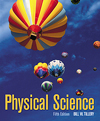For generations people have observed the sky in awe, wondering about the
bright planets moving across the background of stars, but they could do no more
than wonder. You are among the first generations on Earth to see close-up photographs
of the planets and to see Earth as it appears from space. Spacecrafts have now
made thousands of photographs of the other planets and their moons, measured
properties of the planets, and in some cases, studied their surfaces with landers.
Astronauts have left Earth and visited the Moon, bringing back rock samples,
data, and photographs of Earth as seen from the Moon (Figure 17.1). All of these
photographs and findings have given your generation a unique new perspective
of Earth, the planets, and the moons, comets, and asteroids that make up the
solar system. Viewed from the Moon, Earth is a spectacular blue globe with expanses of
land and water covered by huge changing patterns of white clouds. Viewed from
a spacecraft, the planets present a very different picture, each unique in its
own way. Mercury has a surface that is covered with craters, looking very much
like the surface of Earth's Moon. Venus is covered with clouds of sulfuric acid
over an atmosphere of mostly carbon dioxide, which is under great pressures
with surface temperatures hot enough to melt lead. The surface of Mars has great
systems of canyons, inactive volcanoes, and surprisingly, dry riverbeds and
tributaries. The giant planets Jupiter and Saturn have orange, red, and white
bands of organic and sulfur compounds and storms with gigantic lightning discharges
compared to anything ever seen on Earth. One moon of Jupiter has active volcanoes
spewing out molten sulfur and sulfur dioxide. The outer giant planets Uranus
and Neptune have moons and particles in rings that appear to be covered with
powdery, black carbon. These and many more findings, some fascinating surprises and some expected,
have stimulated the imagination as well as added to our comprehension of the
frontiers of space. The new information about the Sun's impressive system of
planets, moons, comets, and asteroids has also added to speculations and theories
about the planets and how they evolved over time in space. This information,
along with the theories and speculations, will be presented in this chapter
to give you a picture of Earth's immediate neighborhood, the solar system. |



 2002 McGraw-Hill Higher Education
2002 McGraw-Hill Higher Education

 2002 McGraw-Hill Higher Education
2002 McGraw-Hill Higher Education